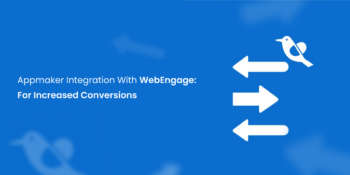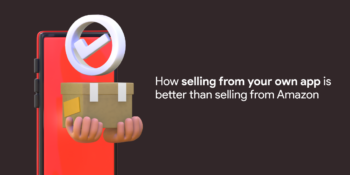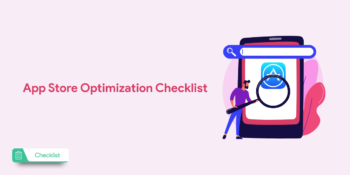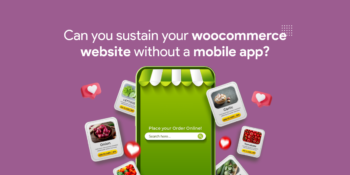Deep linking is one of the easiest ways to bring users to a specific screen within your app. It is the simple way of connecting users to your app and thus, bringing them where you want them to be.
For example, if you find something interesting while you are using an app and want it to share with a friend? The deep linking feature allows you to share app content with your friends by making them download the app and taking them exactly where you want them to be.
Let’s learn more about deep linking and how it plays a significant role in the typical experience of an app user.
What is deep linking?
Deep linking is an idea that helps mobile apps to reach beyond their respective walled gardens so that users can navigate to specific parts of an app. It enables sharing and accessing app content with greater ease. This intuitive feature uses push notifications to send users directly to specific pages within an app, making it easy for users to reconsider an abandoned cart, view new content, or shop a sale.
Types
Deep linking helps you offer a seamless user experience and can increase your store’s conversion rate and retention rate effortlessly. Let’s look at the types of deep linking:
Basic deep linking
Basic deep linking is the one that takes you to a specific part of an app on your mobile device. This means it works only if the user has already installed the app. This is advantageous as it supports user retention by bringing back users to specific parts of the app. Basic links can be promoted through various channels such as email, social media, and marketing push notifications.
Deferred deep linking
Deferred links have an additional step before taking you to the specific part of an app. They can direct users to their respective app stores if the user does not have the app installed, and then displays the original page that user was directed to.
Contextual deep linking
These refer to links that provide additional benefits to marketers. They store additional contextual information in order to help the marketers to do more with their content. Contextual deep links are basic or deferred deep links with added parameters that can be added by the marketers themselves.
Mobile deep linking standards
There are mainly three standards for mobile deep links depending on the OS: URI schemes, Universal Links, and App links.
URI Schemes
URI stands for Uniform Resource Identifier. In simple words, similar to URLs, URI schemes point to apps on a mobile device. This works well only if the app is installed, otherwise, it shows an error message.
Universal Links and App Links
Universal Links are deep links created for iOS and App Links are created for Android. These links solve the challenges posed by URIs by offering a built-in fallback option. This can redirect users to your website if the app isn’t installed.
Deep linking benefits
Deep linking offers numerous benefits from a marketing perspective namely – boosting engagement, conversions, and retention. Let’s take a deeper look at the benefits:
Effective App marketing
Deep linking can help improve the discoverability of the content. The same is true for those working on eCommerce apps and trying to promote their products. If the app content is interesting enough to capture the attention of the target audience, a deep link establishes a clear path to take them there.
Linked Push notifications
The deep linking feature can make your push notifications work more effectively. Linking notifications to a specific section of your app helps you directly bring users to a designated part of the app. This is done with the help of deep links. This will allow users to arrive at a specific part of your app through the notification.
Funnel targeting
Funnel targeting is something that marketers use to boost various kinds of app monetization efforts. Deep linking makes it more powerful by driving specific users to a particular part of the app, thus making it easier to further push the users down the tunnel with engaging content and powerful CTAs.
User experience
Deep linking enhances user experience by allowing users to be directed to a specific app section. This offers a fast and intuitive experience for the customer which encourages them to come back to the app.
Analytics
Deep links help analysts and marketers know exactly where their users are coming from. This is very useful in the larger context of driving app downloads and a range of other app marketing campaigns. Deep links can help provide significantly more accurate insights on mobile app analytics.
How to deep link to an app?
There are essentially two ways to create deep links.
Direct development
Direct development means retaining the links at the app development stage itself. Here, the developers create the needed URI schemes and work on the AndroidManifest.xml file to create deep links. This technical process can only be done by a developer and involves various stages such as Associated Domain Entitlement and verification.
Third-party tools
This method involves using third-party mobile app analytics tools such as Firebase to provide deep linking services. Third-party tools help you create deep links for apps from a no-code mobile app builder for your WooCommerce store.
With third-party tools, you can track these links through various attribution channels. With direct development, it is hard to set up a separate analytics dashboard for deep links. These tools offer their platform for data analysis and derive insights.










No Comments
Leave a comment Cancel